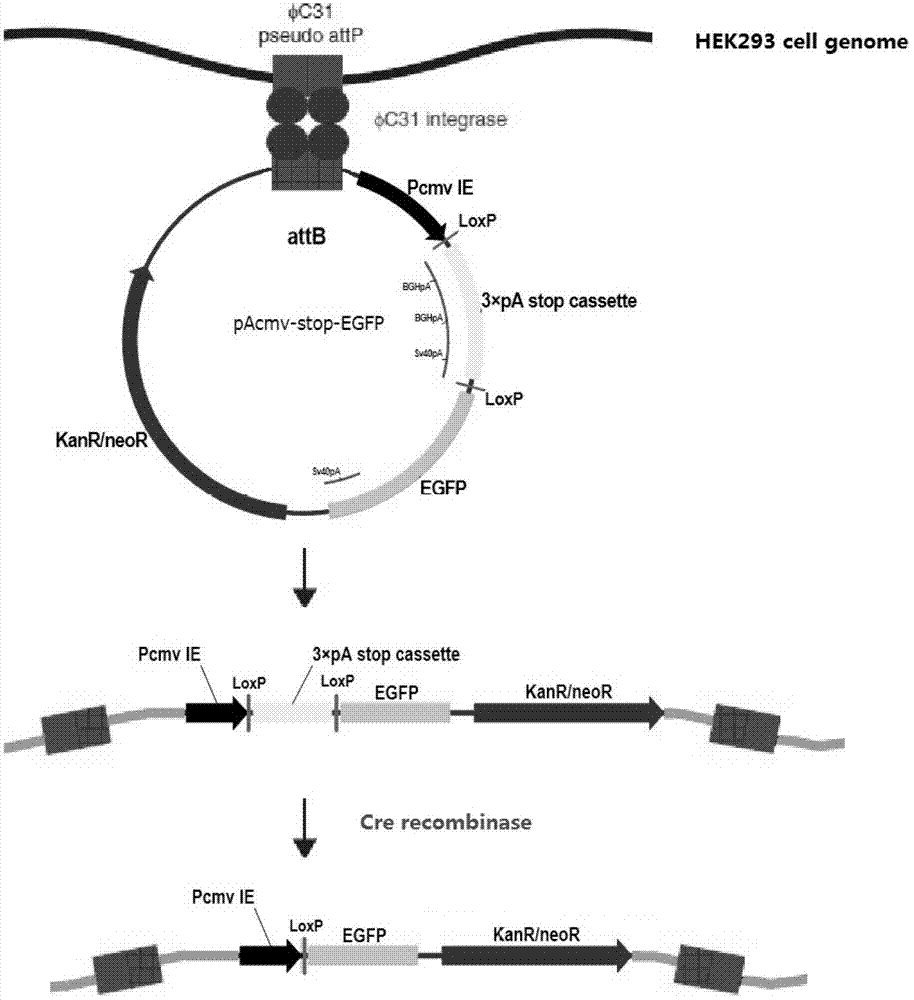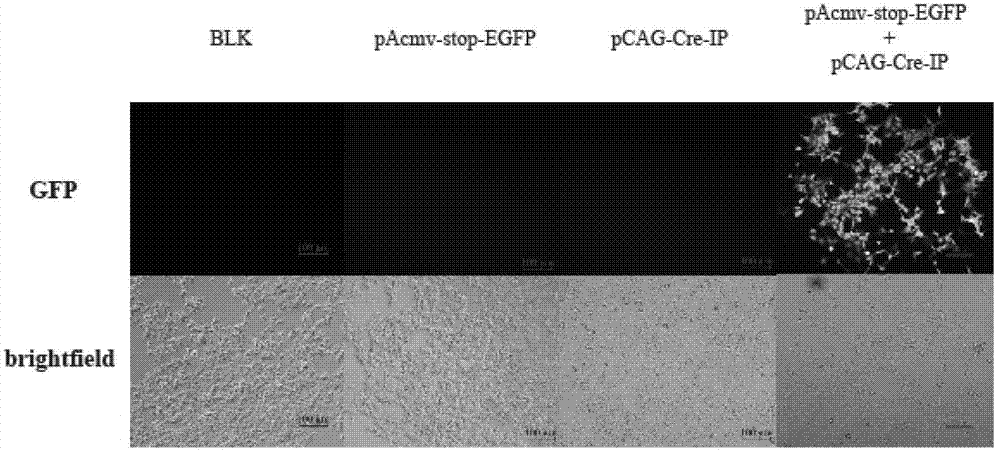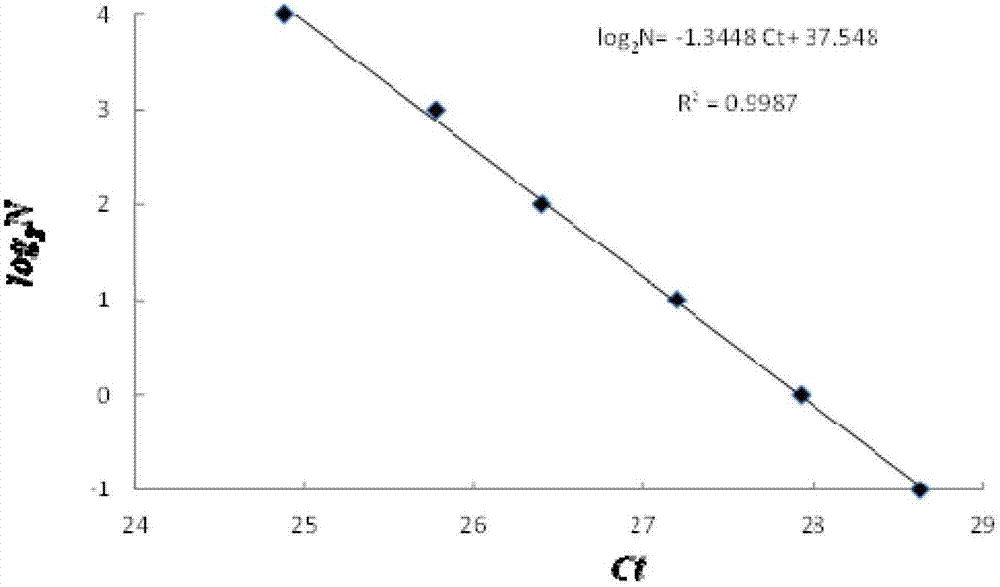Cre fusion protein functional test cell and modified Cre fusion protein
A fusion protein and functional detection technology, which is applied in the direction of the introduction of foreign genetic material modified cells, microbial measurement/inspection, the use of vectors to introduce foreign genetic material, etc., can solve the failure of cell line establishment, affect the normal growth of cells, and affect the Cre Recombinase verification and other issues to achieve high transmembrane efficiency and good biological activity
- Summary
- Abstract
- Description
- Claims
- Application Information
AI Technical Summary
Problems solved by technology
Method used
Image
Examples
Embodiment Construction
[0032] The present invention will be further described in detail below in conjunction with specific embodiments, which are explanations of the present invention rather than limitations.
[0033] 1. Cre recombinase functional verification cell line 293-C31-L2GFP establishment and functional verification
[0034] 1.1 Construction of vector pACMV-stop-EGFP
[0035] The vector pACMV-stop-EGFP construction process used to establish a cell line for detecting cre recombinase activity is as follows:
[0036] Using the carrier pcdna3.1 (+) (Invitrogen Company) as a template, two sections of BGH terminator sequences were amplified by PCR method, one of which had fragment P1 with AscI and SpeI restriction sites, and its amplification primers were:
[0037] Upstream primer: TTGGCGCGCCACCCGCTGATCAG;
[0038] Downstream primer: CCGGACTAGTGGTTCTTTCCGCCTCAGAAGCC;
[0039] Another fragment P2 with SpeI and AflII restriction sites, its amplification primer is:
[0040] Upstream primer: GGAC...
PUM
 Login to View More
Login to View More Abstract
Description
Claims
Application Information
 Login to View More
Login to View More - R&D
- Intellectual Property
- Life Sciences
- Materials
- Tech Scout
- Unparalleled Data Quality
- Higher Quality Content
- 60% Fewer Hallucinations
Browse by: Latest US Patents, China's latest patents, Technical Efficacy Thesaurus, Application Domain, Technology Topic, Popular Technical Reports.
© 2025 PatSnap. All rights reserved.Legal|Privacy policy|Modern Slavery Act Transparency Statement|Sitemap|About US| Contact US: help@patsnap.com



